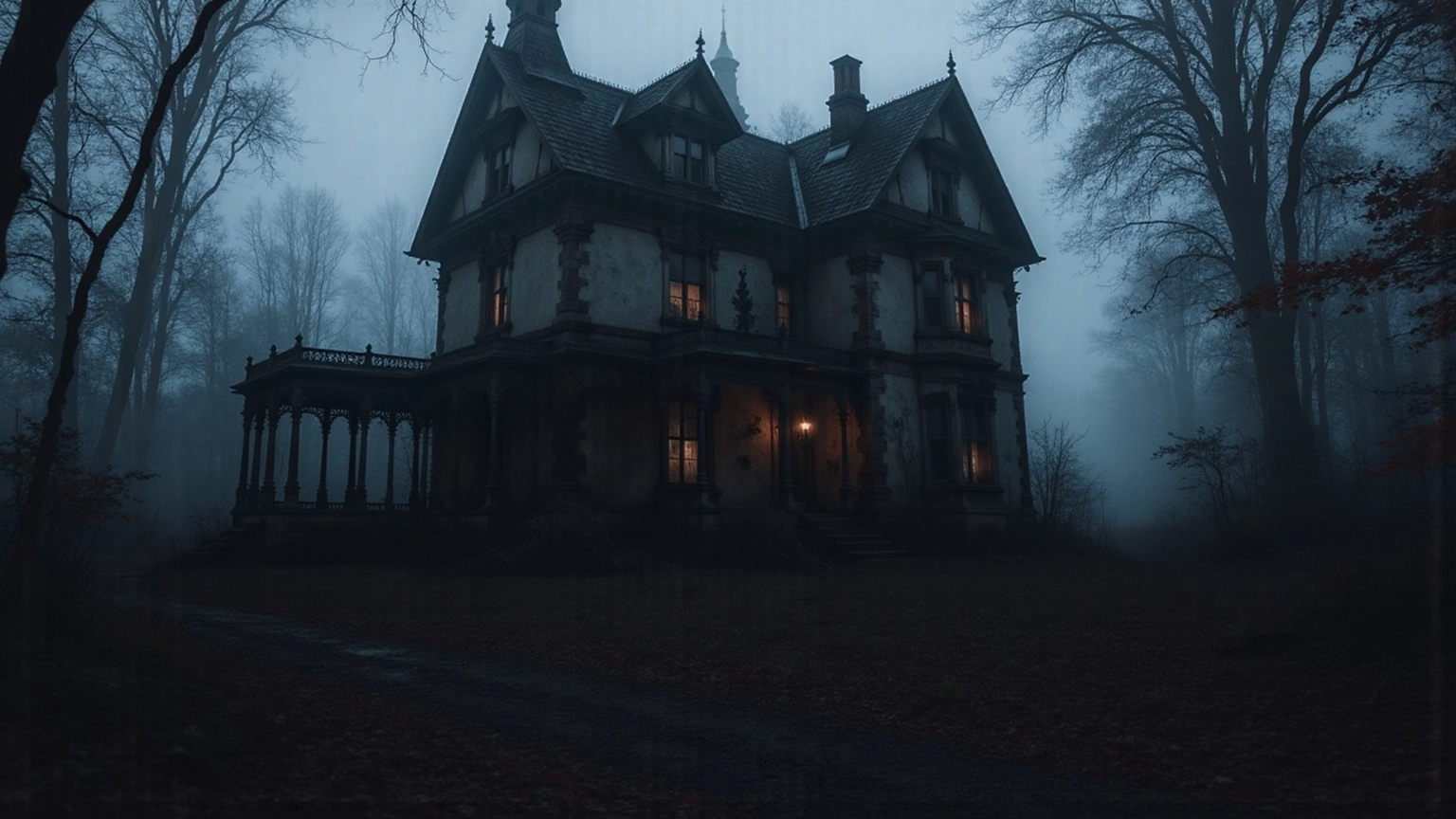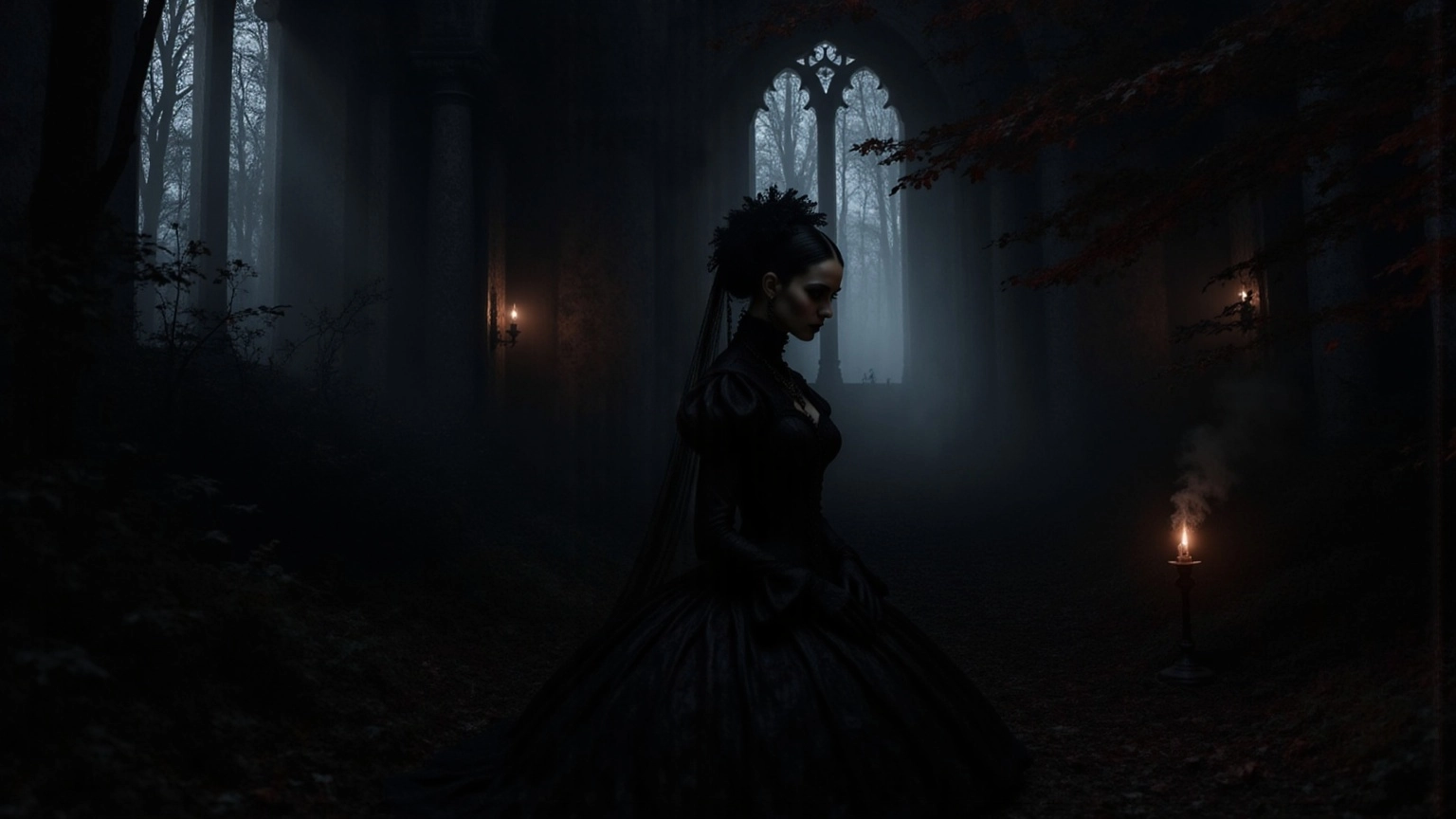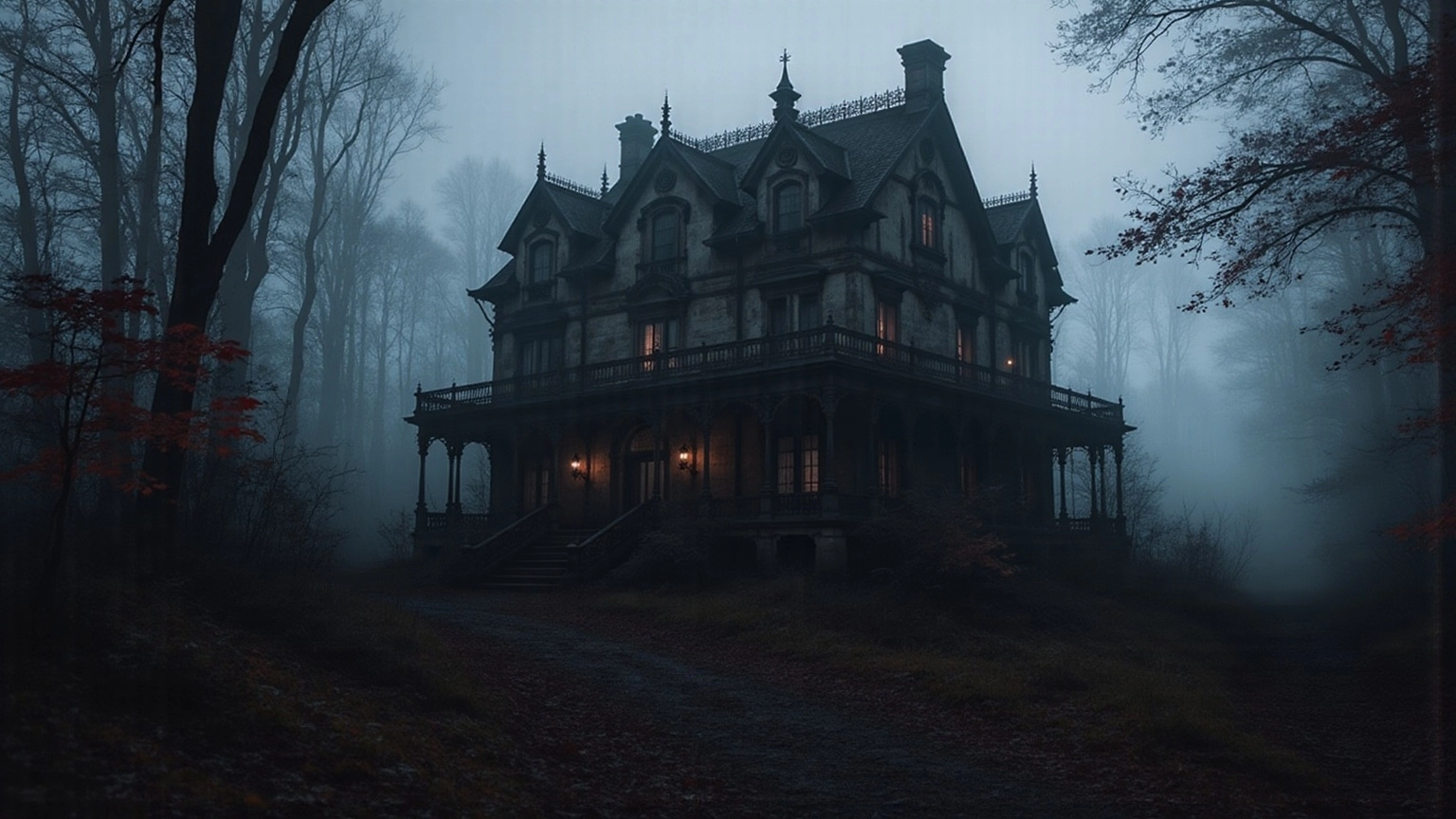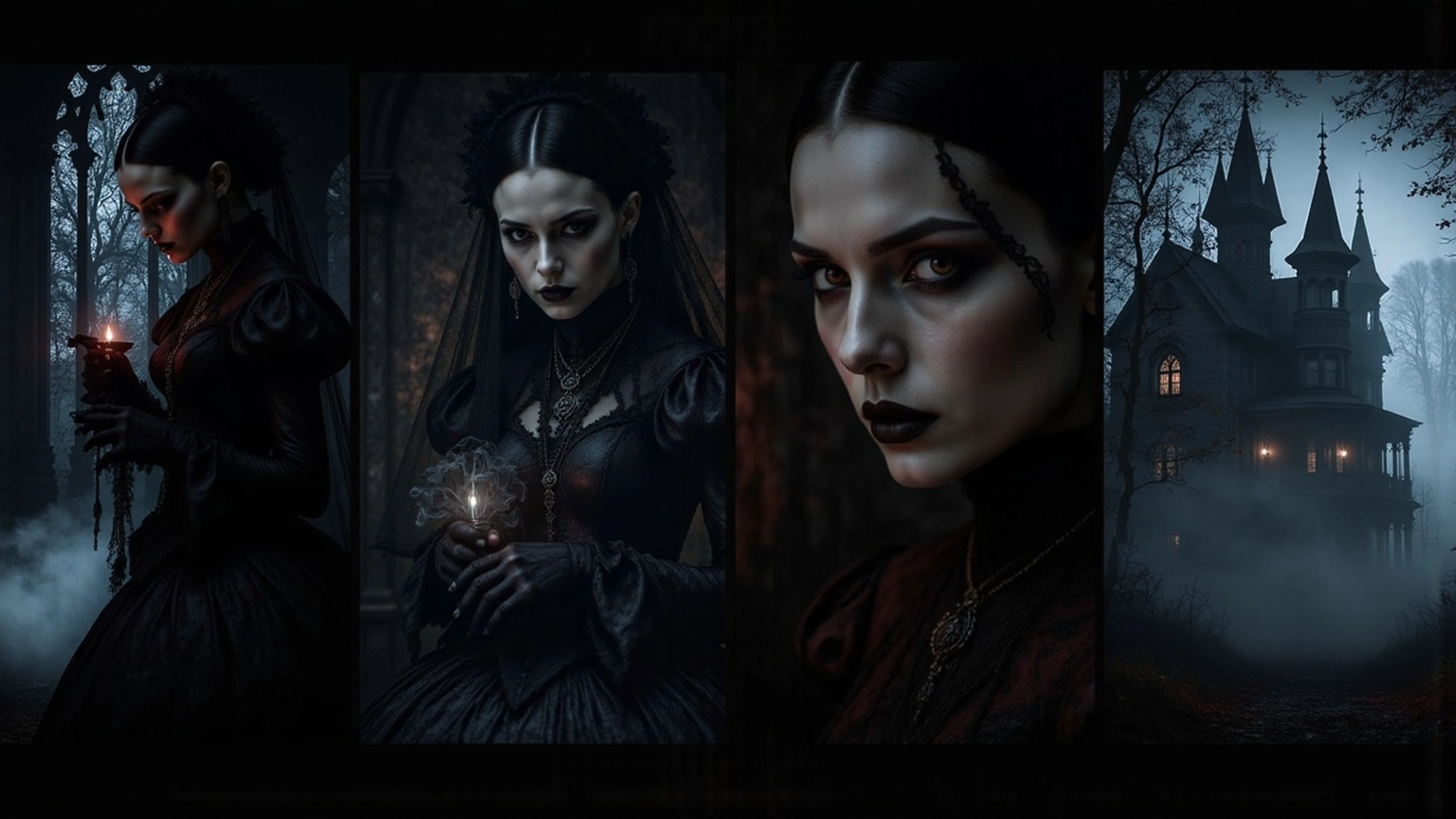
Understanding Gothic Films: Origins, Elements, and Impact
Share
Overview
Gothic films emerged from the shadows of early 20th-century adaptations of dark literature, steeped in atmospheric dread and complex characters. They dance with themes of the supernatural and madness. Classic works like 'Frankenstein' and 'Dracula' didn’t just set the stage—they ignited a genre that has morphed, addressing contemporary societal issues while keeping its haunting allure alive.
What secrets do these films whisper about our darkest fears? Dive deeper, and you’ll find a world where every flicker of light reveals the lurking shadows of our collective psyche.
Introduction
Gothic films pull you into a world where shadows twist and the supernatural lurks just out of sight. This genre, steeped in the chilling tales of gothic literature, fuses horror with psychological depth, daring viewers to confront the darker sides of human nature. As these films morph, they mirror societal fears and challenge us to face our own existential crises.
What is it about the haunting atmosphere and morally gray characters that ensnares our attention? How do these elements carve the legacy of gothic cinema? Dive in, and let’s unravel these mysteries together.
Define Gothic Films: An Overview of the Genre
Gothic films are a mesmerizing subgenre that draws you into the shadows, inspired by the haunting whispers of gothic literature. They thrive on horror, the supernatural, and the dark corners of human psychology. Picture this: dark, brooding environments that envelop you, where haunted locations and intricate characters wrestle with their own existential dread. This genre doesn’t just tell stories; it conjures visceral emotions of fear and suspense, often weaving in threads of romance and tragedy.
What are the key characteristics of gothic films? They’re as follows:
- Atmosphere: A suffocating sense of dread, amplified by moody cinematography and chilling soundscapes.
- Settings: Think decaying mansions, eerie landscapes, and isolated villages—each a character in its own right, steeped in unease.
- Themes: The supernatural, madness, isolation, and the duality of human nature, all reflecting our deepest societal anxieties.
- Characterization: Complex protagonists and antagonists, each marked by psychological depth and moral ambiguity, drawing you into their turmoil.
The impact of dark literature on cinema is undeniable. Classic adaptations like 'Frankenstein' and 'Dracula' form the bedrock of gothic films, preserving the essence of the originals while breathing new life into them for modern audiences. They spark a rich dialogue between literature and film. Take 'Gaslight' (1944)—a psychological thriller that masterfully intertwines dark motifs with themes of manipulation and sanity, solidifying its legacy in both psychological and dark horror. Seven Oscar nominations, with Ingrid Bergman snagging Best Actress—talk about critical acclaim.
As gothic films evolve, they boldly tackle contemporary societal issues, reflecting the enduring relevance of their dark motifs. Films like 'The Devil's Backbone' and modern retellings of classic tales showcase its ability to adapt and resonate with new generations. Dark cinema remains a vital, pulsating part of the cinematic landscape. The British Film Institute's initiative celebrating these motifs highlights the genre's lasting allure, captivating diverse audiences who crave its unique blend of horror and wonder.

Trace the Origins: The Historical Development of Gothic Films
Horror movies? They trace their roots back to the early 1900s, where Thomas Edison’s adaptation of Mary Shelley’s 'Frankenstein' ignited the first flickers of dark cinematic exploration. This audacious venture laid the groundwork for a genre that would explode in the 1930s, as sound films emerged. Iconic productions like 'Dracula' and 'Frankenstein' (1931) didn’t just entertain; they carved visual and thematic conventions that would haunt horror cinema for decades.
As the genre evolved, it danced with movements like German Expressionism, introducing chilling stylistic features such as chiaroscuro lighting. This enhancement cranked up the atmospheric tension, weaving a web of shadows around dark narratives. The psychological depth of noir cinema further enriched the genre, peeling back layers for deeper character development and existential musings.
Fast forward through the decades, and horror cinema has morphed, reflecting societal fears and cultural shifts—especially in the wake of war. This adaptability is palpable in the resurgence of horror films, which seduce audiences by fusing classic elements with contemporary tales. The genre’s allure? It lies in its uncanny ability to conjure mystery and unease, cementing its place as a crucial thread in the tapestry of cinematic history.

Identify Key Elements: Characteristics of Gothic Films
Gothic films create a dark tapestry of atmosphere, setting, themes, characters, and symbolism—each thread drawing you deeper into their haunting embrace.
- Atmosphere: Dread hangs thick in the air, a palpable presence crafted through shadowy cinematography and chilling soundscapes. It’s a world where the uncanny lurks just beneath the surface, waiting to ensnare you.
- Setting: Picture decaying mansions, eerie landscapes, and isolated castles—each location a character in its own right, steeped in history and mystery, much like the settings found in gothic films. They reflect the turmoil within, enhancing the visual storytelling. In The Nun, the monastery’s haunting architecture doesn’t just set the stage; it amplifies tension and supernatural dread.
- Themes: In gothic films, themes like death, madness, and the supernatural are not just motifs; they serve as invitations to confront our deepest fears. The Devil's Backbone fuses fantasy with historical fiction, pushing horror’s boundaries and daring you to look closer.
- Characters: Meet the complex, tormented souls of gothic films, who are grappling with their pasts and societal chains. They’re flanked by archetypes—the mad scientist, the tragic hero, the femme fatale—each adding layers to the narrative. In The Black Cat, revenge and cult-like rituals propel the characters, showcasing the genre’s psychological depth.
- Symbolism: In gothic films, symbolism such as mirrors, shadows, and supernatural elements pulse with deeper meanings, inviting multiple interpretations. In Gaslight, mirrors reflect the protagonist's unraveling mind, revealing the emotional depths typical of this dark realm.
In essence, these elements intertwine to create a mesmerizing experience, resonating with viewers and transforming horror into a timeless exploration of the human psyche and the mysteries that shroud our existence.

Examine Notable Works: Iconic Gothic Films and Their Impact
Several iconic gothic films have carved their names into the genre, each leaving a mark that resonates with audiences and filmmakers alike—much like the experience offered by Darc Arts.
- 'Nosferatu' (1922): This silent film stands as a cornerstone of vampire cinema, establishing visual tropes that have influenced countless adaptations. Its haunting imagery and expressionist style set a precedent for how vampires are depicted on screen, making it a crucial reference point in horror. Just as 'Nosferatu' captures the essence of the unknown, Darc Arts beckons consumers to explore the darker side of life through its high-quality THCA products, crafted with pure ingredients that embody elegant darkness.
- 'Rebecca' (1940): Alfred Hitchcock’s adaptation of Daphne du Maurier’s novel intricately weaves psychological tension with dark elements. The film dives deep into themes of identity and memory, illustrating how the past can haunt the present—a hallmark of dark storytelling. This mirrors Darc Arts' focus on personal exploration and the artistic aspects of cannabis consumption, urging users to reflect on their own narratives while indulging in premium THCA offerings that elevate their experience.
- 'The Haunting' (1963): Renowned for its masterful use of sound and atmosphere, this classic horror production cultivates a profound sense of unease. It delves into the psychological facets of fear, demonstrating how the unseen can provoke dread—a crucial component in dark narratives. Similarly, Darc Arts' products aim to provide therapeutic advantages, encouraging relaxation and mental clarity without the psychoactive effects of THC, enabling consumers to confront their own fears in a secure environment, akin to the characters in this chilling tale.
- 'Crimson Peak' (2015): A contemporary take on romantic horror, this film marries breathtaking visuals with themes of love, betrayal, and the supernatural. It showcases the genre's enduring relevance, appealing to modern audiences while honoring its rich heritage. Darc Arts embodies this blend of elegance and mystery, offering a lifestyle that harmonizes dark aesthetics with cannabis wellness, inviting enthusiasts to indulge in a hauntingly powerful experience.
These films, particularly gothic films, not only illustrate the traits of horror cinema but also reflect the shifting anxieties and fascinations of society. Their influence is palpable in both traditional and contemporary interpretations, shaping the genre and altering audience perceptions of dark themes. Just as these gothic films forge a community of gothic enthusiasts, Darc Arts cultivates a movement that invites consumers to embrace the gothic lifestyle through its unique offerings, elevating cannabis culture through elegance and an unwavering commitment to quality.

Conclusion
Gothic films weave an immersive tapestry that ensnares audiences, delving into the shadows of human nature and the supernatural. This genre, steeped in gothic literature, fuses horror with psychological depth, daring viewers to face their most profound fears. The allure of gothic cinema lies not just in its spine-chilling tales but in its mirror to societal anxieties, rendering it a timeless narrative form.
As we traverse the realm of gothic films, striking characteristics emerge:
- A haunting atmosphere
- Evocative settings
- Profound themes
- Psychologically intricate characters
Iconic works like 'Nosferatu,' 'Rebecca,' and 'Crimson Peak' illuminate the genre's evolution, each film etching an indelible mark on the cinematic canvas. These films do more than entertain; they provoke thought, shedding light on the duality of human experience and the tangled web of our fears and desires.
As gothic films continue their metamorphosis, they beckon audiences to confront their darker impulses and reflect on the human condition. The genre's adaptability and resonance with contemporary issues amplify its significance in cinema. Embracing the gothic aesthetic invites a deeper dive into self and society, urging viewers to unearth the beauty lurking in darkness and the narratives that shape our understanding of existence.
Frequently Asked Questions
What are gothic films?
Gothic films are a subgenre that combines elements of horror, the supernatural, and human psychology, often set in dark, brooding environments that evoke feelings of fear and suspense.
What are the key characteristics of gothic films?
The key characteristics include a suffocating atmosphere, settings like decaying mansions and eerie landscapes, themes of the supernatural and madness, and complex characters marked by psychological depth and moral ambiguity.
How has dark literature influenced gothic films?
Dark literature has significantly influenced gothic films through classic adaptations such as 'Frankenstein' and 'Dracula', which preserve the essence of the original stories while adapting them for modern audiences.
Can you give an example of a notable gothic film?
'Gaslight' (1944) is a notable example, as it intertwines dark motifs with themes of manipulation and sanity, earning seven Oscar nominations and solidifying its legacy in both psychological and dark horror.
How do contemporary gothic films address modern issues?
Contemporary gothic films, such as 'The Devil's Backbone' and modern retellings of classic tales, tackle societal issues while showcasing the genre's ability to adapt and resonate with new generations.
Why is gothic cinema considered relevant today?
Gothic cinema remains relevant due to its ability to reflect enduring societal anxieties and its unique blend of horror and wonder, captivating diverse audiences and maintaining a vital presence in the cinematic landscape.
